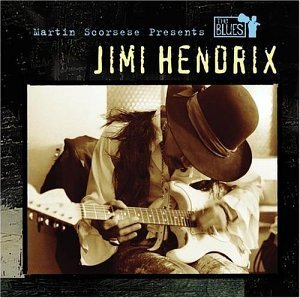 The Rykodisc albums and Reprise box sets proved that there was still gold in the Hendrix hills. With an eye on streamlining (and reissuing) the catalog, the estate made the very surprising move to take it to MCA in the U.S. They promised that further archival projects would make everything wonderful, but immediately raised eyebrows by repackaging the three Experience albums with new artwork, and deleting the existing Reprise CDs, including the recent box sets.
The Rykodisc albums and Reprise box sets proved that there was still gold in the Hendrix hills. With an eye on streamlining (and reissuing) the catalog, the estate made the very surprising move to take it to MCA in the U.S. They promised that further archival projects would make everything wonderful, but immediately raised eyebrows by repackaging the three Experience albums with new artwork, and deleting the existing Reprise CDs, including the recent box sets.But MCA’s next move was surprisingly good, even with Alan Douglas’s name in the credits. Blues collected 11 mostly obscure recordings to firmly present Jimi Hendrix as a key link in the blues guitar tradition, rather than just a flashy guy who played with his teeth.
The set is neatly bookended by “Hear My Train A-Comin’”, first in an acoustic 12-string solo performance from 1967, then in the lengthy electric performance as heard on Rainbow Bridge. “Red House” appears in its original UK LP rendition, then again with the expanded “Electric Church”. In between are such warhorses as “Born Under A Bad Sign”, “Mannish Boy”, “Catfish Blues”, and “Bleeding Heart”, plus the originals “Once I Had A Woman” and “Jelly 292”, alternate versions of previously altered album tracks. The most interesting yet controversial piece is a re-edited “Voodoo Chile Blues”, from several takes of the slow version heard on side one of Electric Ladyland.
The timing for Blues was excellent, given the genre’s then-resurgence thanks to young white guys like Jonny Lang and Kenny Wayne Shepherd, who considered Jimi an influence, and such veterans as Buddy Guy and B.B. King, who considered him an heir. Its stature in the canon is confirmed by its continual in-print status when the estate took over the catalog five years later, and again in this century when it moved to Sony.
Also in this century, a couple of years before stamping his name on documentaries about Bob Dylan and George Harrison, director Martin Scorsese tried to one-up Ken Burns with a PBS series on the blues. If anything, it opened the opportunities for a flood of companion CDs covering famous and forgotten bluesmen, the likes of which hadn’t been seen since Sony rediscovered Robert Johnson in 1990. The Hendrix estate also heard cash registers, so they dove in with another set.
Martin Scorsese Presents The Blues: Jimi Hendrix should not be considered definitive in the least; while it only overlaps a few song titles with Blues, it’s not exactly illuminating. Five of the tracks could be considered standard—the Smash Hits version of “Red House”, “Come On” and the long “Voodoo Chile” from Electric Ladyland, the execrable “My Friend” from The Cry Of Love and later First Rays Of The New Rising Sun, and “Midnight Lightning”, which closes South Saturn Delta. Three songs are repeated from the 2000 box set, including a smoking take of “Hear My Train A-Comin’” with the Experience.
That leaves exactly two songs not officially released before. “Georgia Blues” is a something of a rewrite of “Stormy Monday”, featuring Lonnie Youngblood on sax and lead vocals, in an uncanny similarity to Bob Seger. Slightly more interesting is “Blue Window”, where he’s backed by the Buddy Miles Express for 13 minutes, horns and all.
As many of the tracks feature Jimi playing alongside people other than the Experience or the Band of Gypsys, the album does succeed in presenting another side of him. Unfortunately, it had already been done, and better, making it less a loving portrait than a grab for cash. Its out-of-print status today suggests that even the Estate doesn’t consider it part of the canon. Naturally, with the latter of those rare tracks out of circulation, used copies go for big bucks.
Jimi Hendrix Blues (1994)—4
Jimi Hendrix Martin Scorsese Presents The Blues: Jimi Hendrix (2003)—3

No comments:
Post a Comment